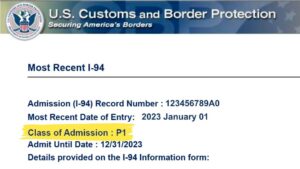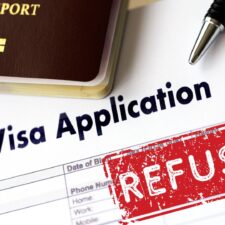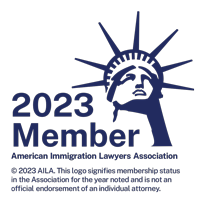What Does Your I-94 Classification Really Mean?
If you’ve recently traveled to the United States or are planning to do so, you may have heard or come across what’s known as the Form I-94 Arrival/Departure Record. This seemingly unassuming document contains crucial information about your legal status and the conditions of your stay while in the United States. It’s like a secret code that holds all the details, including something called your “classification”. Now, you may be wondering, “What in the world does that mean?” Well, this blog will help break it down for you.
Understanding the I-94
Before we jump into the specifics of classifications, let’s demystify the Form I-94 first. The I-94 is like your entry ticket to the U.S., but with important information about how long you’re allowed to hang around inside the United States. This used to be issued on a white paper card that was handed to you upon your arrival to the U.S., but thanks to the advancements of technology, now it can be easily accessed online. It is extremely crucial to ALWAYS remember to check your I-94 online EVERY TIME you enter the U.S. as it will provide the actual date when you must exit the U.S. This is so you avoid falling out of status. If you want to learn how and where to find your I-94, make sure you go check out the video I put together on YouTube HERE where I walk you through the process step by step.
The I-94 has a code made up of two or three letters, and that code represents your “Class of Admission.” This fancy term is just a way of saying what type of visa did you enter the United States with (or if no visa what status were you permitted to enter the U.S. with). Knowing your classification is like knowing the rules of the game during your stay.
Common I-94 Classifications
These classifications are as diverse as the people who come to the U.S. The following are just a few common examples of the most common classifications you’ll see on the I-94:
- B-1: Business Visitors – If you’re here for work-related stuff, like meetings or business gigs, this one’s for you.
- B-2: Tourists – For the sightseers, family visitors, and all those folks here to enjoy the good times.
- E-1: Treaty Traders – Think of this as the “Commerce Collector” visa. You’re a trader from a country that has a special trade agreement with the U.S.
- E-2: Treaty Investors – For the folks who’ve made significant investments in a U.S. business or work for businesses that have done so, then you’re in the game.
- E-3: Specialty Occupation Workers from Australia – This one’s specifically if you’re an Australian professional here working your magic in a specialized job.
- F-1: Students – If you’re an international student studying at a U.S. school, you’ll find your classification here.
- H-1B: Temporary Workers – Highly skilled professional workers usually get this classification.
- K-1: Fiancé(e)s – If you’re here to tie the knot with your American sweetheart, you’re a K-1.
- L-1: Intracompany Transferees – Employees of multinational corporations temporarily relocating to work in a U.S. branch or subsidiary, this one’s the one
- O: Extraordinary Ability or Achievement – For the superstars in their field who come to the U.S. to share their talents and skills
- P: Athletes, Entertainers, and Artists – Whether you’re a sports hero, a rock star, or a talented artist, you’re in the U.S. to perform and entertain American audiences. This classification shows you’re a “Player” in your field.
- VW: Visa Waiver – If you entered as a visitor under the Visa Waiver Program.
Why Knowing Your Classification Matters
Okay, so now that you’ve got your classification sorted, why does it matter? Well, it matters for a bunch of reasons:
- Rules and Staying Out of Trouble: Your classification comes with its own set of rules. Knowing these rules keeps you out of hot water and helps you avoid any trouble during your stay, like getting kicked out.
- Rights and Perks: Some classifications come with special rights, like being allowed to work or study. Knowing your classification helps you make the most of these opportunities.
- Extending Your Stay or Changing Status: If you’re thinking of staying longer or changing your immigration status while in the U.S., your current classification plays a big role.
- Money Matters: Your classification can affect how you handle taxes and your finances while you’re here in the U.S.
- Travel Plans: When you leave and come back to the U.S., your classification can affect whether you can re-enter and how long you can stay.
Your I-94 classification isn’t just a random code; it’s like your guidebook to what’s allowed during your stay in the United States. Whether you’re here as a tourist, student, worker, or any other type of visitor, understanding your classification helps you follow the rules and make the most of your time in the U.S. If you’re ever unsure about your classification or have questions about your immigration status, don’t hesitate to reach out to us. In my over 20 years of practice, I have helped countless individuals navigate the immigration process, and I’m always here to provide guidance tailored to you. Being in the know, and playing by the rules, ensures you have a smooth and hassle-free visit to the U.S., without any unexpected surprises.
Make sure to also check out our other blogs HERE and don’t forget to SUBSCRIBE to our YouTube channel where we post videos that you can’t miss!















Very important information indeed